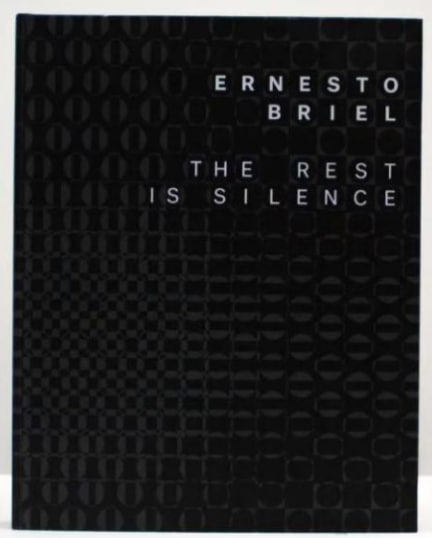Ernesto Briel

BRIEL LUZARDO, Ernesto, Guanabacoa, Havana, Cuba, 1943 – New York, USA, 1992 Painter, draftsman, set designer. He was a pioneer of Op Art in Cuba. The development of his body of work takes us back to the early 1960s. Briel’s maturation as an optical and kinetic artist parallels that of his Latin American counterparts in Paris. It was in his small studio in Guanabacoa, an idyllic colonial municipality of Havana, that he began to create assemblages and three-dimensional pieces that played with the feelings and proposals of kinetic movement; and, at times, he reviewed the essence and proposals of the historical Dadaist group. In 1978 he accepted an invitation to be part of a very short-lived artistic group: the Grupo Cubano de Arte Optico. In 1980, as part of the Cuban exodus, Ernesto Briel left Cuba along with his lifelong companion, fellow artist Jesús (Cepp) Selgas, and settled in the center of New York City. In the 1980s he brought with him a great change in the architecture of a new life as a man and as an artist. He begins by leaving Cuba behind and being reborn in the freedom of exile. It will be the only entire decade that he will live and work in New York, in the emblematic midtown New York. It is the decade in which he will be able to access and be nourished by the art that he has always been interested in and inspired, that is now in front of his eyes and not in his hands, in the form of printed material, and that will mark the future of he. creative decisions. It is a time to face art with the aim of discovering, deciphering, revaluing, taking advantage of and discarding. These are critical and turbulent times for Briel, who must make important personal and professional decisions. From this decade and the first two years of the next, most of Briel’s sketches in existence are dated. The 1980s will find Briel, the accomplished painter, making use of his academic training and introducing a more palette and texture. varied in their practice. In 1992, a lifelong dream of Briel’s came true: he was asked to join fellow Cuban teacher Carmen Herrera in the exhibition titled Dúo Geo. He could not attend the inauguration. He died of complications related to an illness a few weeks later. Ernesto Briel’s legacy is rooted in a deep passion and fidelity to geometric abstraction. The purist cartoonist of the 1960s and 1970s, a pioneer of Op Art in his native Cuba, came full circle. Towards the end of his life and career, he drew, sketched and painted with incredible strength and precision. He dared to give a flat pictorial surface a more painterly quality, enriching and adding more three-dimensionality to the picture planes. In his practice, Briel fused linear, minimalist and geometric elements with a complex and profound vision that reveals the flexibility and universality of the chosen theme. According to Samuel Feijóo, he was considered the “purest” painter of optical art in Cuba.
Education
1961-1964 “San Alejandro” National School of Visual Arts, Havana.
1976-1980 National School of Design, Havana.
1989 Photography. Parsons School of Design, New York.
Professional Activity
1961 Actor. National Guiñol Theater, Havana.
1966 Set and Costume Designer. National Guiñol Theater, Havana.
1978 Member. Cuban Opco Art Group, Havana
Personal Exhibitions
1966 Morales and Briel. OP and POP drawings. Art Gallery, Galiano and Concordia, Havana.
1967 OP-POP Drawings. Santa Clara Gallery, Santa Clara, Las Villas.
1968 OP Drawings. Armando Morales. Ernesto Briel. La Rampa Gallery, Habana Libre Hotel, Havana. 1971 Ernest
Briel. Drawings Exhibition. Havana Gallery, Havana.
1974 Ernesto Briel. Marnez Villena Room, Union of Writers and Performers of Cuba (UNEAC), Havana. 1988 Briel.
Painngs [with Jesús Selgas]. Rivern Arts Center, West New York, New York.
1991 Briel Now Geo. Boncina Gallery Workshop, New York.
1992 Briel & Selgas. Recent Works. Chuck Levitan Gallery, New York.
____. Duo Geo [with Carmen Herrera]. Jadite Galleries, New York.
1994 An exhibition of Works by Ernesto Briel. Jadite Galleries, New York.
Group Exhibitions (Selection)
1961 Art in the factories and on the streets on July 26, 1961. Municipal Gallery, Havana.
1964 Twelfth Annual Arstas Noveles Exhibition. Lyceum, Havana.
1965 1st Biennial of Novel Artists of Cuba. International Art Center, Havana.
1967 Provincial Hall of Arstas Noveles. Art Gallery, Galiano and Concordia, Havana.
1968 National Drawing Salon 1967. Havana Gallery, Havana.
1969 National Hall of Fine Arts [drawing, engraving and experimental techniques]. Art Gallery
International, Havana.
____. Young Painting from Cuba. Algeria/USSR/Mongolia/Korea
1970 Room 70. National Museum of Fine Arts, Havana.
1971 Cuban Rooms. National Museum of Fine Arts, Havana.
____. (International Book Art Exhibition). Leipzig.
1977 Plastic Arts Exhibition. Tribute to the II Congress of the UNEAC and the 60th Anniversary of the
October Revolution. International Art Center, Havana.
1978 UNEAC Plastic Arts Hall 1978. National Museum of Fine Arts, Havana.
1979 Cuban Optical Art Group. They expose. International Art Center, Havana.
____. UNEAC Plastic Arts Hall 79. International Art Center, Havana.
1983 Fine Arts Exhibition for the Festival de Las Artes. Tamiami Park, Dade County, Florida.
____. 18 AirThree. Consolidate Bank, Miami, Florida.
1988-1989 Hispanic Expressions 88/89. Coors Naonal Hispanic Art Exhibition and Tour/Mexican Cultural
Institute, San Antonio, Texas/Southwest Museum of Art, Los Angeles, California/Arvada Center for the
Arts and Humanies, Arvada, Colorado./Triton Museum of Art, Santa Clara, California/Millicent Rogers
Museum, Taos, New Mexico./Center for the Fine Arts, Miami, Florida.
1988 Small Wall Works. Amos Eno Gallery, New York.
1989 Contemporary: Juxtapoing Percepons. Museum of Contemporary Hispanic Art (MOCHA), New York.
1990 Paper Visions II. Biennial of Contemporary Lan American Arts. Housatonic Museum of Art, Bridgeport,
Connect.
1991 Contemporary Caribbean Arts. Creave Arts Workshop Gallery, New Haven, Connecticut.
1995 Art-Exhibit and Silent Aucon of Works by Contemporary Arts to Benefit FAITH Services. Jadite Galleries,
NY.
____. The Geometric Abstraction. Vista Gallery, New York.

THE REST IS SILENCE
2022